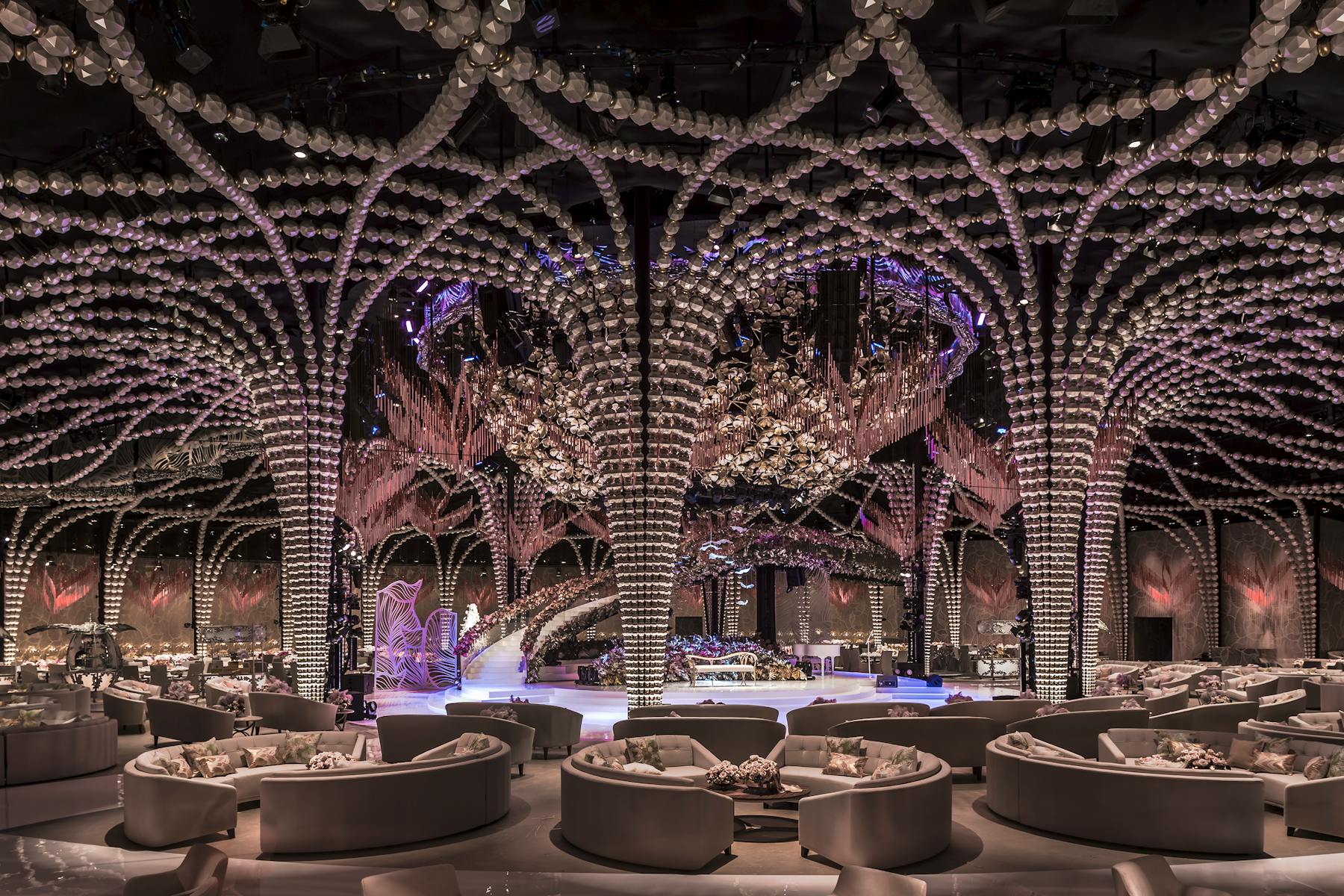Creating Mise-en-Scène
Invisible complexity
The complexity of this project, as well as the very tight deadline for its execution, demanded meticulous planning and flawless organisation, from the beginning of the creative concept until the last guest left the location at the end of the evening. The on-site assembly and build-up alone required two full months of intensive work, the success of which depended on highly complex logistics. Mastering this invisible complexity and harnessing it in the service of our artistic vision was the key to our success with this production.
Space & layout
With a creative concept based on musical entertainment, in which the guests would feel they were participants, we set the production ‘in the round’, designing a circular space of 3,650 square metres (39,000 sq.ft) with the bride’s dais in the centre doubling as a stage for the performers.
To define and contain the space, visually magnifying it while creating a sense of both drama and intimacy, we developed an architectural structure comprising ribbed pillars that increased in diameter as they rose, curving outwards at the top to create a network of links overhead.
This ensured unobstructed views of the bride and the entertainment from every vantage point, while the circular floor plan encouraged guests to move freely and mingle together throughout the evening.
Pillars
To maintain lightness while adding visual impact (to suggest the lights of Broadway or the water jets of a fountain) the ribs of the pillars were formed by thousands of spheres that were faceted to echo the shape of the dome and positioned on golden spacers, graduated in diameter from floor to ceiling.
Each one of these geospheres was prototyped separately in-house, to ensure millimetre precision. Casting moulds were then made in every size and sent to a trusted manufacturer.
To guarantee correct positioning and maximise efficiency during the on-site assembly every attachment point and every corresponding hook was numbered – rather like a highly complex and elaborate Meccano system.
The creamy pearlescent finish on the geospheres was also the subject of extensive trials, to ensure that it complied exactly with the colour matching that we applied to the entire colour scheme.
Screening
To partially screen the dais until the bride’s arrival, and to conceal the dinner area until food was served, we designed special fabrics that would have visual presence as well as a degree of transparency. To achieve this, the design was laser-cut ‘in negative’, removing the background fabric so that only the pattern remained. This was installed as multi-layered curtains that were raised as the bride entered, adding a sense of theatricality to the moment.
Integrating performance
Music and dance were identified at the outset as a key element. Woven seamlessly into the programme, the performances changed style and tempo to reflect the mood of the evening’s key moments. Given the client’s request that we feature only leading Arab artists, each had to be carefully chosen to ensure the desired shifts in mood. Specially choreographed dances, based on Khaleeji and Egyptian tradition, were also integrated into the programme, to create a seamless transition from one moment to the next.
Moreover, the food design was integrated into the entertainment, changing presentation style and cuisine as the music changed: soft and elegant during a capella singing; more robust, with Arabic flavours while Khaleeji singers took to the stage.
